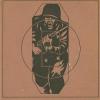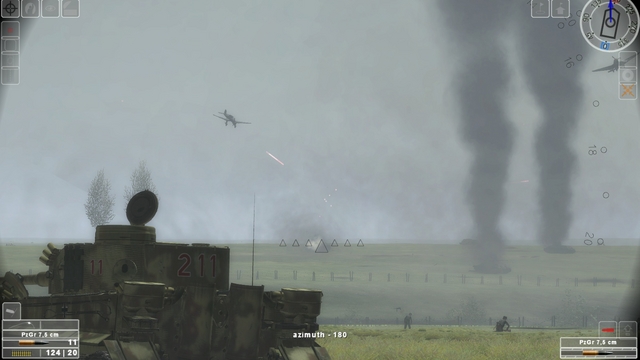Search the Community
Showing results for tags 'steel fury - kharkov 1942'.
Found 3 results
-
From the album Combat Sims
-
From the album Combat Sims
-
Refighting the Second Battle of Kharkov in Graviteam's classic WW2 tanksim! Despite acquiring Steel Fury - Kharkov 1942 (SF) not long after release, I only started seriously playing the tanksim years later, when modders added more (especially later-war) AFVs and generally extended SF's scope beyond the Second Battle of Kharkov in early summer 1942. So I never got around to playing the stock SF campaigns…until recently, when I decided it was a shame not to give them a tryout, at least. So that's what I did, and here's how it went! The real battle The First Battle of Kharkov in the Ukraine was fought in autumn 1941 during Operation Barbarossa, when the German 6th Army (later destroyed at Stalingrad) captured the city. The Second Battle - the one featured in SF - came in early summer 1942. Having thown the Germans back from the gates of Moscow over the winter of 1941-2, the Red Army's next major offensive came further south, in May 1942, with ferocious (and initially successful) concentric attacks aimed at retaking Kharkov. However, the Wehrmacht - including once more 6th Army - had been planning an attack of their own, code-named Operation Fredericus. With these forces, the Germans soon stopped and then rolled back and utterly crushed the Soviets, who had, it seems, overestimated their capabilities and underestimated those of the still-formidable Wehrmacht. A more durable and decisive victory over the Germans would have to wait…for about six months, as it turned out. The Red Army had learnt its lesson and the next big offensive, when it came, would see the tables turned and 6th Army annihilated at Stalingrad. But as far as the Second Battle of Kharkov went, the laurels belonged to the Wehrmacht. While SF does support campaigns - and I believe you can create a player profile for each - there's nothing like M1 Tank Platoon II's crew management facility. You will see your crew members moving around inside, and sitting at open hatches of, your tank. But they and the crews of your other platoon tanks ('wingmen' if you like) are annonymous. You can review each tank's/crew's achievements at the end of each mission - but that's about it. Each campaign is basically a sequence of scripted missions which, reasonably enough, follow the course of the actual battle, which you cannot change. So if you're rooting for the RKKA - the Red Army of Peasants and Workers - well, you can destroy all the fascists you like, but it's still gonna end in tears before bedtime. Sorry, tovaritch. Better luck at Stalingrad. Unit affiliation isn't a big thing with Steel Fury. Whereas the campaigns in Ultimation's classic Panzer Commander placed you from the start in a famous tank division (complete with formation insignia in the campaign selection screen) in SF you learn which unit you're with, when you see the first mission briefing. So it's all a bit anonymous, with no real sense of role-playing. However, you do get a short introductory video, with historical newsreel footage and captions which set the scene. After that, you can pick the opening mission from the list of those available for the campaign - just one, to begin with. Complete one mission and the next one in the sequence is added to the list. I think I'm right in saying that this happens regardless of whether you won or not. In my book, it's fine that you can't alter significantly the course of history, and good that you aren't stuck with having to replay unsuccessful missions, before you can progress to the next one. The stock Steel Fury campaigns Out-of-the-box, I believe SF provides three campaigns based on the Second Battle of Kharkov, as follows: Friedericus 1 (Wehrmacht) Soviet Army, Group South Soviet Army, Group North To these, my modded install adds variants with different tanks. I opted to fight for the Wehrmacht. If I recall right, the stock Fredericus campaign starts you off in a Panzer IV with a short-barreled, low velocity 7.5 cm gun, only later getting the longer-barreled weapon with decent armour-piercing capability. If you're not 'well up' on your panzers, one grey panzer might look very much like another; but the Panzer IV below - an early Ausf. F model, with the short, stubby gun - exhibits the eight road wheels per side and the longer, boxier hull, which distinguish it from the 'six a side', more compact Panzer III, pictured below that again. And though the Panzer III's gun is a smaller calibre, in this case it has a much longer barrel and thus penetrates more armour. So...keen to start with a gun which would give me a fighting chance against the Red Army's finest, I opted to play the Panzer III version of the campaign, knowing I would get from the outset a long 5 cm gun - not as good as a long 7.5 but better than the short version of either weapon - better for dealing with tanks, at any rate. Especially big, bad tanks like these: Are you perhaps sitting there thinking 'What a wuss! Why doesn't he just man up and get on with it?' If so, I would suggest you might like to read this account of one of the Germans' most unsettling early encounters with the Klimenti Voroshilov heavy tank. Just one of them in this case, which for 24 hours single-handledly held up a German regimental combat team from 6th Panzer Division, meantime defying various attempts at its destruction. For all their poor ergonomics and comparatively crude finish, the Germans learned to show Soviet tanks like the KV and T-34 a healthy respect. Of course, the Soviets also still had lots of less formidable tanks, like different light tanks and the BT-5 'fast tank' below, with its US-style Christie suspension, speedy but lightly-armoured and with the ability to run on its road wheels instead of tracks, perhaps useful to save wear on approach marches but mechanically a wasteful concept. There might also be some British 'lend lease' tanks, I knew. The Soviet 45mm anti-tank guns were dangerous enough and their 76.2mm field guns had a good A/T capability. Weapons like this would be dug in and hard to spot, but a priority target for my tanks, in any attack. This was going to be no sinecure! The first mission! I neglected to take a screenshot of the mission brief but the screens below show the ground and the disposition of our forces, soon after I loaded up the mission. Tanks - my platoon's Panzer IIIs - are the blue diamonds on the upper screenshot. The infantry's SPWs (Schutzenpanzerwagen, SdKfz 250 and 251 armoured half-track APCs) are the blue pointy-nosed rectangles, over to my left. In short, it's late May 1942 and my unit, Panzer Regiment 201 of 23 Panzer Division, is to support panzer grenadiers in a two-phase operation. First, we are to assist the grenadiers in destroying enemy defensive positions - marked in red on the lower map - on the nearer edge of a wood. Then in Phase 2, we are to sieze and hold the nearby village of Nepokrytoe, which is just off the top left of the map in the lower pic, a few hundred metres beyond the left-hand side of that big wood. . As usual in SF missions and campaigns - though it's rarely made clear in briefings - you are in command of a platoon of tanks, usually three. The missions themselves tend to be for a company-level operation, a sort of self-contained or scaled down representation of a larger battle. This mission's briefing gave me a reasonably clear idea of our tasks and indicated that artillery and the Luftwaffe (which latter I saw no sign of) would be supporting us. As usual the mission briefing - 'orders' would be a better title - is in a structured format, perhaps Soviet as it's not British or US (which closely resembled and evolved into the standard NATO format, namely Ground-Situation-Mission-Execution-Service/Support-Command & Signals) and possibly not WW2 German either. I find the SF 'orders' a bit repetitive yet short on some of the detail a company commander would put into even a quickly-made plan and set out in his verbal orders to the participating platoon commanders, in the company Orders Group. Nevertheless, having seen the briefing, it's always best to do a 'combat appreciation' before you start this sort of mission and so make a plan of how you intend to proceed. Aim - Enemy - Ground - Plan is an abbreviated format I was taught long ago (by an RM Commando officer, as it happened) and found quite useful. Should I go left, centre or right, was what it boiled down to, for Phase 1. The centre looked too devoid of cover and likely exposed to direct fire from all three marked enemy positions - a slow uphill run into the centre of a storm of enemy fire, targets on a two-way range. Looking at the lie of the land, I decided to risk taking the time to switch flanks and go left. Over there, I'd be able to make use of the dead ground the contours suggested should lie next to a road running towards the wood's left-hand edge; which road would also help me to maintain direction. Once over there, I could push up in comparative safety and from the flank, support the infantry by rolling up the enemy positions from left to right, concentrating on one at a time, instead of taking them all on at once. I could do much the same by going right flanking instead, but to get up onto the enemy's flank from a covered approach, I'd have to open up much too wide a gap with the panzer grenadiers. So left flanking it would be. Unfortunately, in SF there's no way of discussing and co-ordinating plans with the commander of the infantry you're often supporting, or with other friendly forces. For example, you cannot temporarily assume command of the whole force and make a plan designed to integrate the fire and movement of tanks, infantry and supporting fire. Instead, your options usually are - either make and execute your own plan, or just conform to the infantry's movements, supporting them more closely and directly - tanks and infantry attacking on the same axis, if you will. I knew from past SF missions that the infantry tend just to rush straight at the objective. But I decided that this time, tanks and infantry would attack on separate axes. I accepted the risk that the infantry, motoring up to the Effective Fire Line in their nippy armoured 'battle taxis', would get ahead of me and maybe suffer serious losses before I was in position. But I like to play a more cautious, tactical game; if the grenadiers want instead to re-stage the Charge of the Light Brigade, well, on their own heads be it. C'est magnifique, mais ce n'est pas la guerre. ...to be continued!
- 4 replies
-
- 3
-

-
- steel fury
- sf42
-
(and 1 more)
Tagged with:



